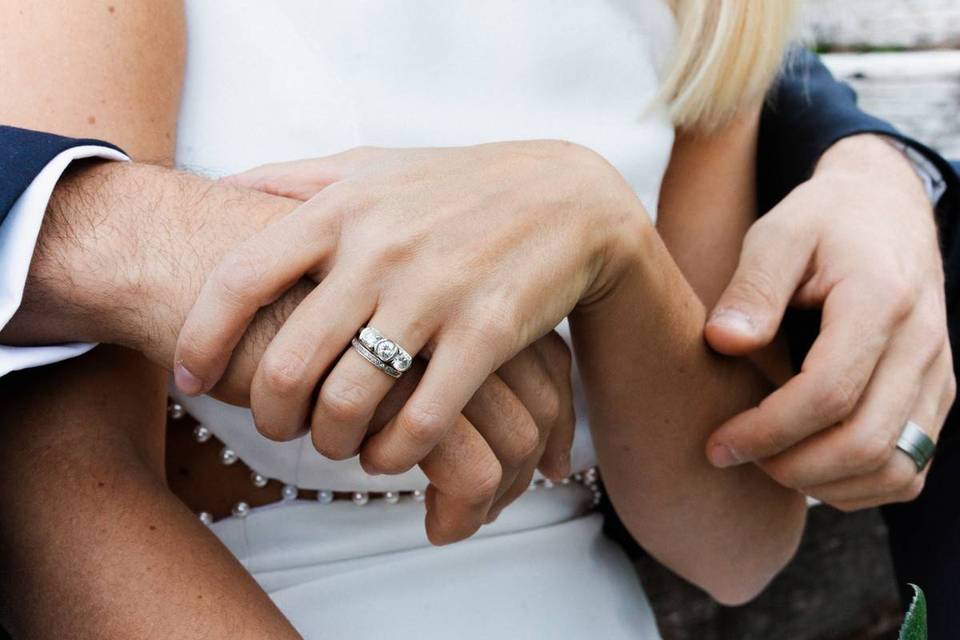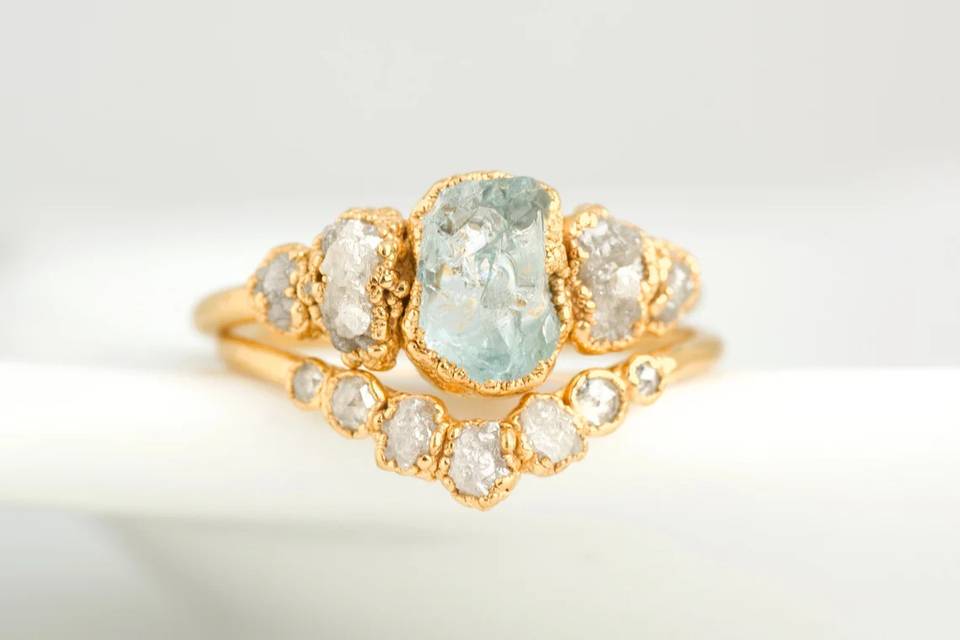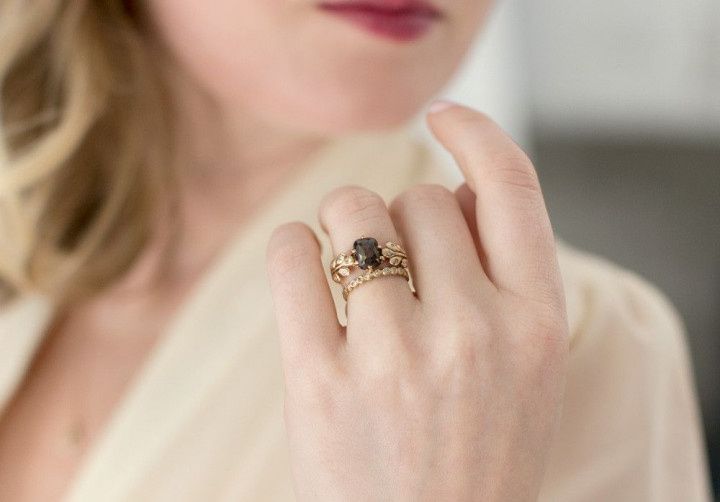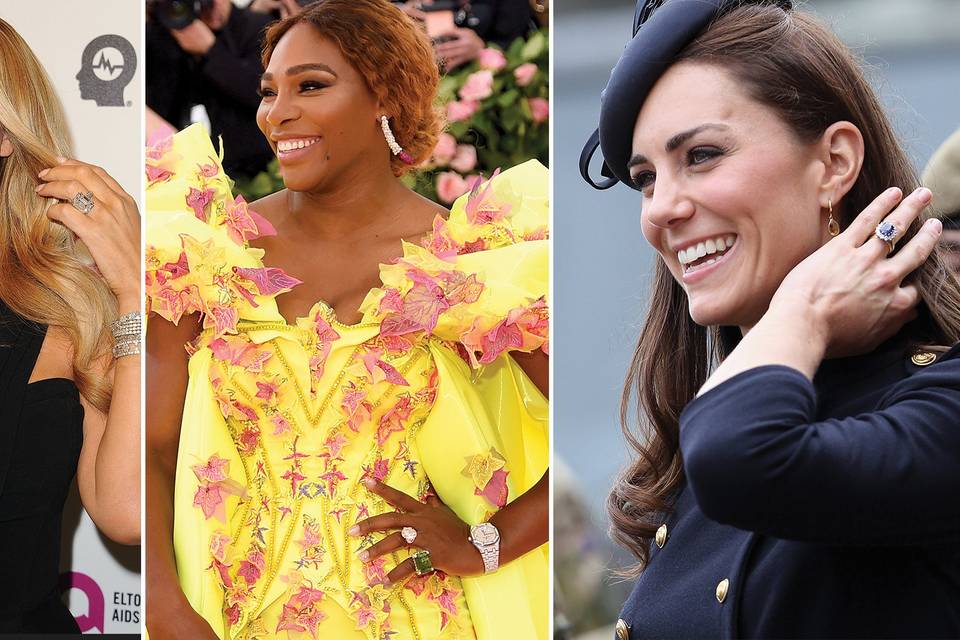How (and Why) the Tradition of Wedding Rings Has Changed Over Time
This now-romantic tradition has practical roots that date back to ancient civilization.
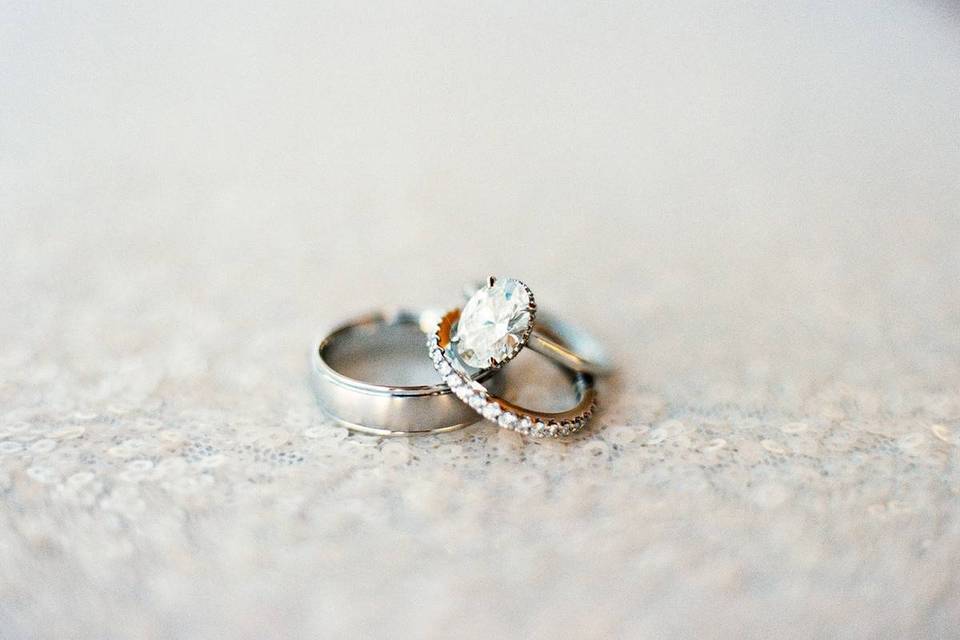
After you're married, your wedding ring is something you're likely going to wear every day. But if you've ever wondered about the history of wedding rings and how they became an important wedding day tradition, we've got answers. Spoiler alert: The exchange of rings started out much differently than how we know it to be today. We asked industry experts to shed light on the significance behind exchanging wedding rings and how their history transformed over centuries to become a modern-day practice—keep reading for the brief rundown.
Wedding rings date back to ancient times.
Although there’s no formal documentation chronicling the earliest engagement rings and the history of wedding rings, historians and jewelers generally agree that the tradition of giving a ring to your lover dates back to ancient Egypt. According to the Gemological Institute of America, Egyptian pharaohs wore and gave rings to represent eternity, with the circle reflecting their cultural belief that your soul lives on even after your body is deceased. The 'ouroboros' ring portrayed a common Egyptian motif: a serpent swallowing its own tail, symbolizing the cycle of life. We also have the ancient Egyptians to thank for the tradition of wearing your wedding ring on your left hand. They believed that the fourth finger of the left hand (now commonly known as the ring finger) had a vein that connected directly to the heart. This was called the vena amoris, or 'vein of love'—the theory has since been disproven, but it’s a romantic notion about eternal love that has lasted for millennia.
When ancient Egypt was conquered by Alexander the Great, king of ancient Greece (then known as Macedonia), the Greeks adopted the Egyptian custom of exchanging rings to signify love and devotion. From there, couples in ancient Rome began to exchange copper and iron rings iron as part of their marriage rituals, with gold wedding rings becoming more common by the 2nd century, according to GIA.
Wedding rings didn’t always symbolize love and fidelity.
While engagement rings and wedding bands are now viewed as tokens of love, that wasn’t always the case. The backstory: Up until the last few centuries, marriage was a much less formal affair that rarely involved any official paperwork or legal witnesses. Throughout ancient times and the Middle Ages, a verbal exchange of commitment—and the occasional wedding ring—was all a couple needed to declare themselves married. According to GIA, it wasn’t until the 12th century that the Christian church established marriage as a "holy sacrament" requiring an official wedding ceremony, which included placing a ring on the bride's finger.
Even then, marriage was viewed primarily as a business transaction or exchange between two families—not as a way to show your lifelong commitment to a soulmate. With that being the case, jewelry or a 'betrothal ring' was often used as a way for one party (generally the male) to prove their worth and show legal commitment. "Throughout time, bands have symbolized many things: love, fidelity, authority, family alliance," says Nicole Corsini, marketing manager of Lang Antique & Estate Jewelry and Antique Jewelry University in San Francisco, California. "But then, as now, their primary message was to represent the commitment between two people in a relationship." According to AJU, the earliest wedding rings were commonly given as a form of payment, which was required for marriage by law, in lieu of actual coins. Wedding rings were also a public symbol that a woman had been granted access to her husband’s household.
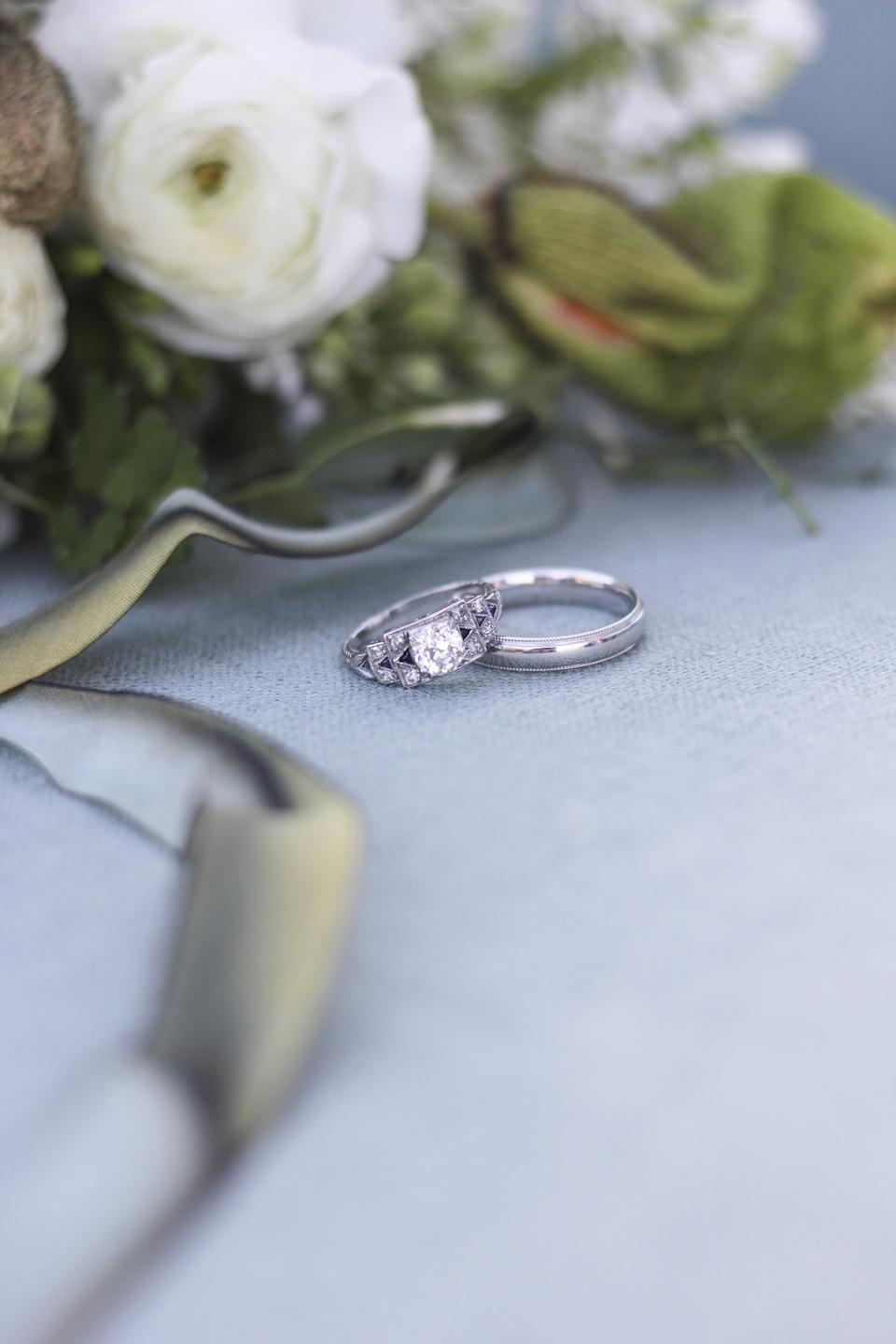
Today’s wedding rings are a much more elaborate process.
The earliest history of wedding rings looked a lot different than the styles we’re familiar with today. In many cases, there was only one ring (typically worn by the woman), unlike the modern tradition of wearing both an engagement ring and a wedding band. It was often a plain band, without gemstones, engravings, or other embellishments. This was especially true among commoners and those who weren’t part of high society—buying an elaborately decorated engagement ring, or two separate rings, was too expensive and out of the question. "Examples of wedding bands date back as far as the Roman era but did not come into common use until the 1700s, and then only among the upper classes," says Corsini. "They were not widely used among the general population."
According to AJU, diamond engagement rings first spiked in popularity during the mid-18th century, after Brazil emerged as a major diamond source, making them more readily available. Their popularity grew through the Victorian Era, thanks to Queen Victoria I and her love of diamond jewelry, according to GIA. Although diamond rings were a new must-have trend for those who could afford them, it wasn’t until the late 19th century that they were officially marketed as the engagement ring standard.
In 1886, Charles Louis Tiffany, founder of Tiffany & Co., introduced the now famous Tiffany Setting, which features a solitaire diamond displayed in a four-prong setting. This design showcases the gemstone prominently above the band of the ring, and it’s still considered one of the most classic engagement ring settings today. Throughout the early 20th century, diamonds continued their reign as the top choice for engagement rings, with many Edwardian and Art Deco designs featuring multiple diamonds, according to AJU.
World War II was a turning point not only for engagement rings, but also wedding bands. "The modern engagement ring tradition became widespread during World War II, when servicemen proposed to their sweethearts as a promise to come back and marry after the war was over," says Corsini. According to AJU, many engagement rings featured less expensive gemstones and fewer precious metals, as materials became harder to source during wartime. World War II was also responsible for establishing the tradition of men’s wedding bands—something that wasn’t common practice throughout earlier history. Married soldiers began wearing wedding bands during deployment as reminders of their wives back home, according to GIA. The tradition eventually caught on among the civilian population, and men’s wedding bands are still widely worn today.
In the late 1940s, there was a wedding boom (and subsequent baby boom) as soldiers returned home from the war. "It was during this time that De Beers launched their famous ‘A Diamond is Forever’ advertising [campaign], ensuring their status as the world's favorite center stone," says Corsini. Diamonds skyrocketed in demand throughout the next several decades, as a result of magazine ads and celebrities promoting them as the number-one way for a man to show his devotion to his fiancée or wife. In 1953, Marilyn Monroe famously sang about them in the song "Diamonds Are a Girl’s Best Friend" when she starred in Gentlemen Prefer Blondes.
Today, wearing wedding rings and engagement rings continues to be the norm, especially for Christian marriages, but couples are going about it in ways that are different than ever before. Case in point: According to our company data, nearly 20 percent of millennials shopped for an engagement ring together prior to the proposal, and one in three will show their partner pictures of rings they like. Many couples are opting to purchase their wedding rings together, which is both romantic and pragmatic. For same-sex couples, there are sometimes two engagement rings, or no rings at all. And while diamonds are still the first choice for most rings, engagement ring trends now run the gamut from minimalistic solitaire styles to lab-created diamonds, designs with recycled metals, and alternative gemstones, like morganite.

